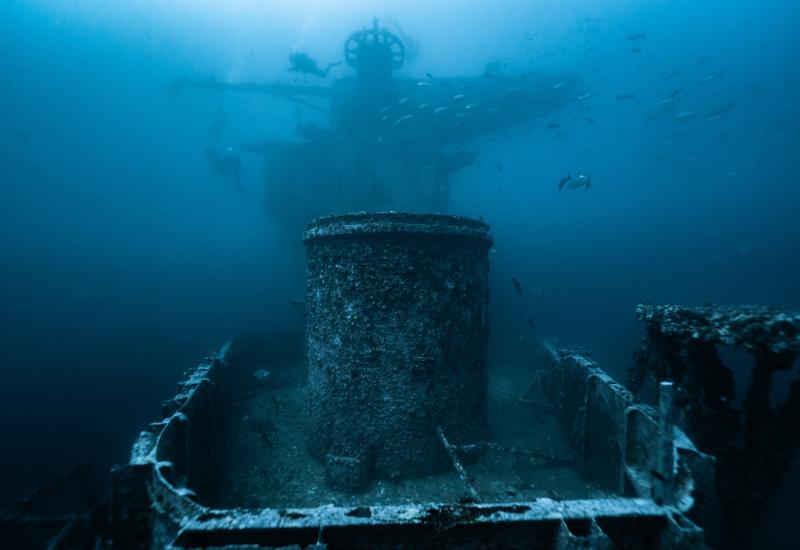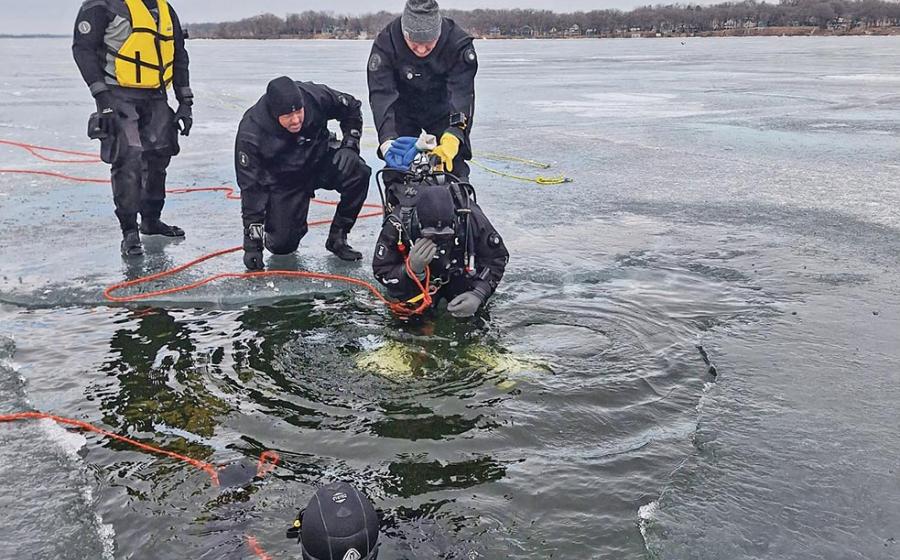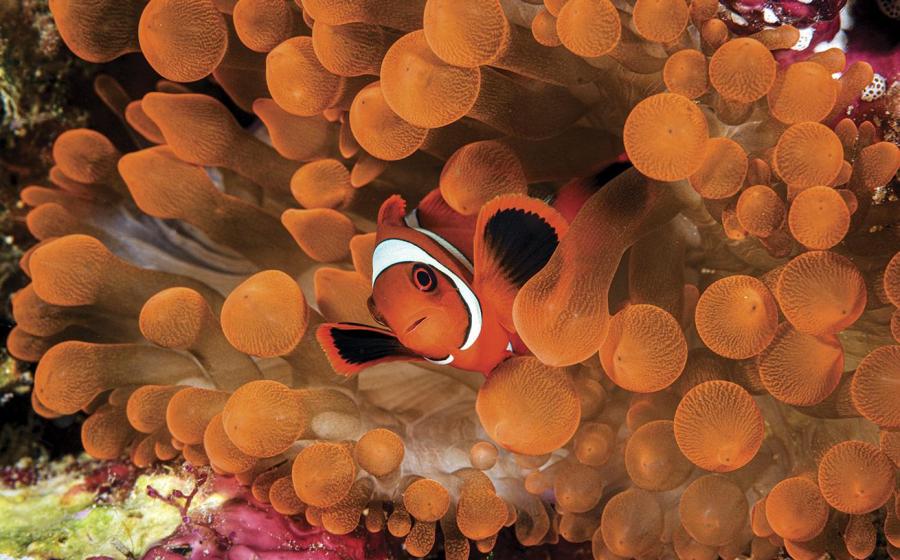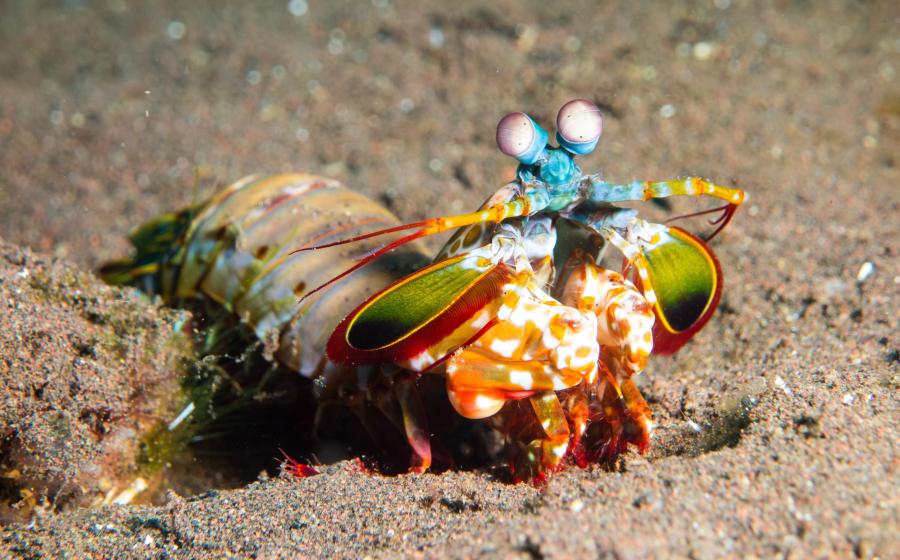Ready to Try Cave Diving? Here's Where to Start

Jill HeinerthThere are no short cuts to becoming a cave diver, and the training is intense. But the rewards are great when you get to explore cave systems around the world.

Sport Diver PhotographerDive Rite LX20 This powerful light can illuminate the darkness of even the biggest cave, and its concentrated beam makes it easy to signal a buddy. It has a double-O-ring-sealed body and three power modes, and is rated to 500 feet. diverite.com; $750

Sport Diver PhotographerDive Rite Nomad LTZ Made of durable SuperFabric material, this BC is built to resist the rigors of sidemount diving — whether you’re pushing deep into a cave or squeezing through tight passages. The inflator and exhaust valves are positioned on the inside of the wing for added protection. diverite.com; $579

Dive Rite Cave Primary Reel Don’t go in unless you know how you’re coming out. The top-handle design lets you hold the reel in the same hand as your dive light. It comes with 400 feet of heavy (No. 24) braided line and a large stainless snap. A lockdown screw holds the reel where you stop it. diverite.com; $65
What is the difference between those who safely explore caves and those who get into trouble? Proper training.
We asked PADI’s technical development executive, Karl Shreeves, what it takes to become a full-cave diver. Certified since 1970, Shreeves has made more than 100 safe cave dives.
“Cave diving is a rewarding technical challenge that demands that you be entirely in the moment,” says Shreeves.
When signing up for a cave-diving course, Shreeves says, you must possess good buoyancy control, situational awareness and team consciousness. “Cave diving is for self-disciplined, detailed divers who follow the rules and stay within their limits.”
The overhead environment presents a unique challenge to divers: “There’s no going straight up if you have a big problem,” says Shreeves. “But you also need patience — becoming a cave diver isn’t a two-day course, and it’s not something you can do by buying gear and reading posts online,” he stresses. “People who cut corners, omit procedures and try to take shortcuts are the ones who can have really big problems in caves.”
Endurance is also required, so be honest about your fitness. “You need moderate strength and endurance because the gear is heavy and you swim a long way — once you swim in, you have to swim out,” says Shreeves.
He recommends these training steps:
» Advanced Open Water Diver This course teaches the initial skills for exploring within depths of 130 feet. He also strongly recommends taking the Rescue Diver course.
» Enriched Air Diver “Dives tend to be long and at moderate depths, where EANx makes a big difference by giving you more no-stop time and shorter decompressions,” says Shreeves.
» Tec Sidemount Diver Sidemount has a lot of logistical advantages in caves, says Shreeves, so it can be a valuable course.
Once you have this training, you’re ready to step into cavern and cave diving.
» Cavern Diver “Becoming a cave diver starts with this course,” says Shreeves. “You learn fundamental cave kicks; light, line and reel use; team-diving procedures; gas management; and how to handle emergencies,” he says. “You can cavern dive in a standard open-water kit, with some modifications, though if you know you want to be a cave diver, I suggest using full cave gear, if your instructor allows.”
» Cave Diver Distinctive Specialty Once you complete Cavern Diver, the next step is Cave Diver Distinctive Specialty. “You learn what you need to explore beyond the cavern zone,” says Shreeves. “You refine and expand a lot of what you learned in the cavern course, but now you’re doing it while managing additional hardware — multiple cylinders, two regulators, at least three lights and so on. You learn how to navigate in the cave and properly use guidelines. You practice some worst-case scenarios, such as finding your way out with no lights while sharing gas with a teammate, what to do if you get lost in a cave, and how to find a lost teammate, among others. And you get to see a lot of cool caves.”
And that’s the bottom line, says Shreeves. “Caves are fascinating and amazingly different, ranging from spacious and beautiful to small and eerie. They have organisms and formations you won’t see anywhere else.”
My Favorite Cave
Where do cave divers like to submerge? Sometimes close to home, sometimes farther afield.
“I love the Ghost Cave in Sardinia, Italy. It is actually classified as a cavern dive, so all divers can experience it as longas they are with a qualified guide. The white limestone walls, the tight, twisting entrance and alabaster mineral formations give a taste of real cave diving. ” — Alex Mustard, marine biologist and professional underwater photographer
“After a tortuous swing through a tunnel in hurricane-force flow at Silver Glen Spring in central Florida, you reach a doorway that drops into a room of unmatched size and wonder. In the depths, a small vent of relic seawater spurts out of a tiny hole, offering just enough salinity in the freshwater river to attract stingrays, blue crabs and even bull sharks from over a hundred miles up the St. Johns River. ” — Jill Heinerth, owner, Heinerth Productions
“My favorite is Devil’s Cave System in High Springs, Florida. You could dive there every week for a year and be able to see a new passage every time.” — Jared Hires, general manager/marketing director, Dive Rite









